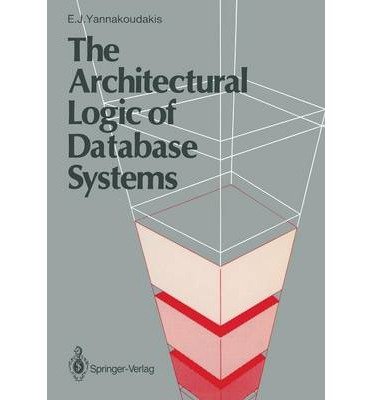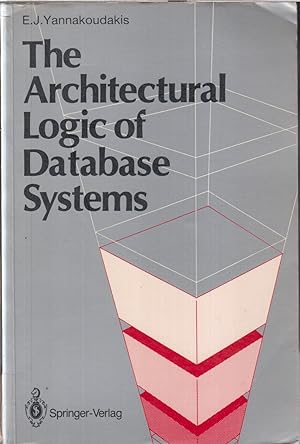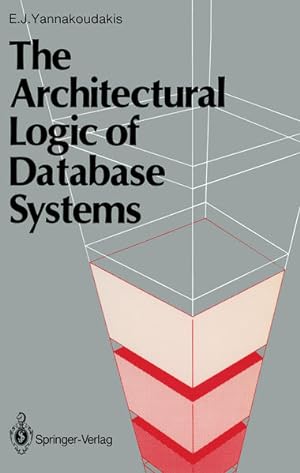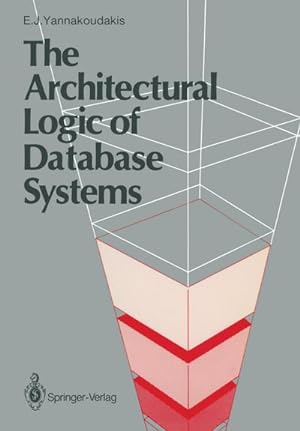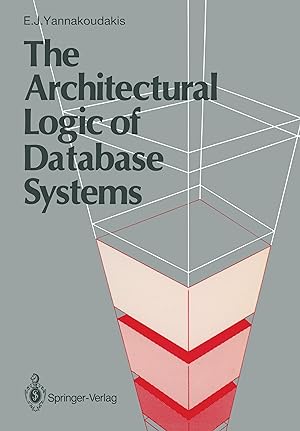architectural logic database systems de yannakoudakis (19 résultats)
Filtres de recherche
Type d'article
- Tous les types de produits
- Livres (19)
- Magazines & Périodiques (Aucun autre résultat ne correspond à ces critères)
- Bandes dessinées (Aucun autre résultat ne correspond à ces critères)
- Partitions de musique (Aucun autre résultat ne correspond à ces critères)
- Art, Affiches et Gravures (Aucun autre résultat ne correspond à ces critères)
- Photographies (Aucun autre résultat ne correspond à ces critères)
- Cartes (Aucun autre résultat ne correspond à ces critères)
- Manuscrits & Papiers anciens (Aucun autre résultat ne correspond à ces critères)
Etat En savoir plus
- Neuf (10)
- Comme neuf, Très bon ou Bon (1)
- Assez bon ou satisfaisant (8)
- Moyen ou mauvais (Aucun autre résultat ne correspond à ces critères)
- Conformément à la description (Aucun autre résultat ne correspond à ces critères)
Reliure
- Toutes
- Couverture rigide (Aucun autre résultat ne correspond à ces critères)
- Couverture souple (19)
Particularités
- Ed. originale (Aucun autre résultat ne correspond à ces critères)
- Signé (Aucun autre résultat ne correspond à ces critères)
- Jaquette (Aucun autre résultat ne correspond à ces critères)
- Avec images (7)
- Sans impressions à la demande (16)
Langue (1)
Livraison gratuite
Pays
Evaluation du vendeur
-
EUR 0,88
Autre deviseEUR 3,65 expédition vers Etats-UnisQuantité disponible : 1 disponible(s)
Ajouter au panierEtat : Good. [ No Hassle 30 Day Returns ][ Ships Daily ] [ Underlining/Highlighting: NONE ] [ Writing: NONE ] [ Edition: First ] Publisher: Springer-Verlag Pub Date: 6/1/1988 Binding: Paperback Pages: 320 First edition.
-
The Architectural Logic of Database Systems
Edité par Springer London, Limited, 1988
ISBN 10 : 3540195130 ISBN 13 : 9783540195139
Langue: anglais
Vendeur : Better World Books, Mishawaka, IN, Etats-Unis
EUR 12,19
Autre deviseGratuit expédition vers Etats-UnisQuantité disponible : 1 disponible(s)
Ajouter au panierEtat : Good. Former library book; may include library markings. Used book that is in clean, average condition without any missing pages. Softcover reprint of the original 1st ed. 1988.
-
The Architectural Logic of Database Systems
Vendeur : Midtown Scholar Bookstore, Harrisburg, PA, Etats-Unis
EUR 8,21
Autre deviseEUR 5,15 expédition vers Etats-UnisQuantité disponible : 1 disponible(s)
Ajouter au panierPerfect Paperback. Etat : Good. Good paperback, bumped/creased with shelfwear; may have previous owner's name inside. Standard-sized.
-
EUR 14,14
Autre deviseEUR 4,29 expédition vers Etats-UnisQuantité disponible : 1 disponible(s)
Ajouter au panierPaperback. Etat : Very Good. Exlibrary with usual library markings. ; 318 pages.
-
Architectural Logic of Database Systems
Vendeur : Midtown Scholar Bookstore, Harrisburg, PA, Etats-Unis
EUR 15,64
Autre deviseEUR 5,15 expédition vers Etats-UnisQuantité disponible : 1 disponible(s)
Ajouter au panierPaperback. Etat : Good. Good paperback, bumped/creased with shelfwear; may have previous owner's name inside. Standard-sized.
-
EUR 10,90
Autre deviseEUR 24 expédition depuis Allemagne vers Etats-UnisQuantité disponible : 1 disponible(s)
Ajouter au panierBroschiert. Etat : Gut. 320 Seiten Sofort verfügbar Versand spätestens am nächsten Arbeitstag Rechnung mit ausgewiesener MwSt. liegt bei daily shipping worldwide with invoice ex library in good condition aus Bibliothek in guten Zustand Sprache: Englisch Gewicht in Gramm: 550.
-
EUR 37,72
Autre deviseEUR 6,41 expédition depuis Royaume-Uni vers Etats-UnisQuantité disponible : 1 disponible(s)
Ajouter au panierPaperback. Etat : Very Good. The book has been read, but is in excellent condition. Pages are intact and not marred by notes or highlighting. The spine remains undamaged.
-
EUR 52,64
Autre deviseEUR 3,42 expédition vers Etats-UnisQuantité disponible : Plus de 20 disponibles
Ajouter au panierEtat : New.
-
EUR 65,42
Autre deviseGratuit expédition vers Etats-UnisQuantité disponible : Plus de 20 disponibles
Ajouter au panierEtat : New.
-
The Architectural Logic of Database Systems
Vendeur : Ria Christie Collections, Uxbridge, Royaume-Uni
EUR 57,94
Autre deviseEUR 13,72 expédition depuis Royaume-Uni vers Etats-UnisQuantité disponible : Plus de 20 disponibles
Ajouter au panierEtat : New. In.
-
EUR 56,37
Autre deviseEUR 17,74 expédition depuis Royaume-Uni vers Etats-UnisQuantité disponible : 10 disponible(s)
Ajouter au panierPF. Etat : New.
-
EUR 7,81
Autre deviseEUR 65 expédition depuis Allemagne vers Etats-UnisQuantité disponible : 7 disponible(s)
Ajouter au panierTaschenbuch. Etat : Gut. Gebraucht - Gut Sofortversand,übliche Markierungsstempel/Zeichen,altersgemaesser Zustand,durch Lagerung leicht gebogen, innen SEHR GUT.
-
EUR 79,74
Autre deviseEUR 14,31 expédition depuis Royaume-Uni vers Etats-UnisQuantité disponible : 2 disponible(s)
Ajouter au panierPaperback. Etat : Brand New. reprint edition. 336 pages. 9.60x6.60x0.76 inches. In Stock.
-
EUR 53,49
Autre deviseEUR 62,91 expédition depuis Allemagne vers Etats-UnisQuantité disponible : 1 disponible(s)
Ajouter au panierTaschenbuch. Etat : Neu. Druck auf Anfrage Neuware - Printed after ordering - If we look back to pre-database systems and the data units which were in use, we will establish a hierarchy starting with the concept of 'field' used to build 'records' which were in turn used to build higher data units such as 'files'. The file was considered to be the ultimate data unit of information processing and data binding 'monolith'. Moreover, pre database systems were designed with one or more programming languages in mind and this in effect restricted independent develop ment and modelling of the applications and associated storage structures. Database systems came along not to turn the above three units into outmoded concepts, but rather to extend them further by establishing a higher logical unit for data description and thereby offer high level data manipulation functions. It also becomes possible for computer professionals and other users to view all information processing needs of an organisation through an integrated, disciplined and methodical approach. So, database systems employ the concepts field, record and file without necessarily making them transparent to the user who is in effect offered a high level language to define data units and relation ships, and another language to manipulate these. A major objective of database systems is to allow logical manipulations to be carried out independent of storage manipulations and vice versa.
-
EUR 50,10
Autre deviseEUR 70 expédition depuis Allemagne vers Etats-UnisQuantité disponible : 5 disponible(s)
Ajouter au panierTaschenbuch. Etat : Neu. The Architectural Logic of Database Systems | Emmanuel J. Yannakoudakis | Taschenbuch | xiv | Englisch | 1988 | Springer | EAN 9783540195139 | Verantwortliche Person für die EU: Springer Verlag GmbH, Tiergartenstr. 17, 69121 Heidelberg, juergen[dot]hartmann[at]springer[dot]com | Anbieter: preigu.
-
EUR 106,14
Autre deviseEUR 28,63 expédition depuis Royaume-Uni vers Etats-UnisQuantité disponible : 1 disponible(s)
Ajouter au panierPerfect Paperback. Etat : Like New. Like New. book.
-
The Architectural Logic of Database Systems
Edité par Springer, Springer Mai 1988, 1988
ISBN 10 : 3540195130 ISBN 13 : 9783540195139
Langue: anglais
Vendeur : BuchWeltWeit Ludwig Meier e.K., Bergisch Gladbach, Allemagne
EUR 53,49
Autre deviseEUR 23 expédition depuis Allemagne vers Etats-UnisQuantité disponible : 2 disponible(s)
Ajouter au panierTaschenbuch. Etat : Neu. This item is printed on demand - it takes 3-4 days longer - Neuware -If we look back to pre-database systems and the data units which were in use, we will establish a hierarchy starting with the concept of 'field' used to build 'records' which were in turn used to build higher data units such as 'files'. The file was considered to be the ultimate data unit of information processing and data binding 'monolith'. Moreover, pre database systems were designed with one or more programming languages in mind and this in effect restricted independent develop ment and modelling of the applications and associated storage structures. Database systems came along not to turn the above three units into outmoded concepts, but rather to extend them further by establishing a higher logical unit for data description and thereby offer high level data manipulation functions. It also becomes possible for computer professionals and other users to view all information processing needs of an organisation through an integrated, disciplined and methodical approach. So, database systems employ the concepts field, record and file without necessarily making them transparent to the user who is in effect offered a high level language to define data units and relation ships, and another language to manipulate these. A major objective of database systems is to allow logical manipulations to be carried out independent of storage manipulations and vice versa. 336 pp. Englisch.
-
The Architectural Logic of Database Systems
Vendeur : moluna, Greven, Allemagne
EUR 48,37
Autre deviseEUR 48,99 expédition depuis Allemagne vers Etats-UnisQuantité disponible : Plus de 20 disponibles
Ajouter au panierEtat : New. Dieser Artikel ist ein Print on Demand Artikel und wird nach Ihrer Bestellung fuer Sie gedruckt. If we look back to pre-database systems and the data units which were in use, we will establish a hierarchy starting with the concept of field used to build records which were in turn used to build higher data units such as files . The file was conside.
-
The Architectural Logic of Database Systems
Edité par Springer London, Springer Berlin Heidelberg Mai 1988, 1988
ISBN 10 : 3540195130 ISBN 13 : 9783540195139
Langue: anglais
Vendeur : buchversandmimpf2000, Emtmannsberg, BAYE, Allemagne
EUR 53,49
Autre deviseEUR 60 expédition depuis Allemagne vers Etats-UnisQuantité disponible : 1 disponible(s)
Ajouter au panierTaschenbuch. Etat : Neu. This item is printed on demand - Print on Demand Titel. Neuware -If we look back to pre-database systems and the data units which were in use, we will establish a hierarchy starting with the concept of 'field' used to build 'records' which were in turn used to build higher data units such as 'files'. The file was considered to be the ultimate data unit of information processing and data binding 'monolith'. Moreover, pre database systems were designed with one or more programming languages in mind and this in effect restricted independent develop ment and modelling of the applications and associated storage structures. Database systems came along not to turn the above three units into outmoded concepts, but rather to extend them further by establishing a higher logical unit for data description and thereby offer high level data manipulation functions. It also becomes possible for computer professionals and other users to view all information processing needs of an organisation through an integrated, disciplined and methodical approach. So, database systems employ the concepts field, record and file without necessarily making them transparent to the user who is in effect offered a high level language to define data units and relation ships, and another language to manipulate these. A major objective of database systems is to allow logical manipulations to be carried out independent of storage manipulations and vice versa.Springer Verlag GmbH, Tiergartenstr. 17, 69121 Heidelberg 336 pp. Englisch.


